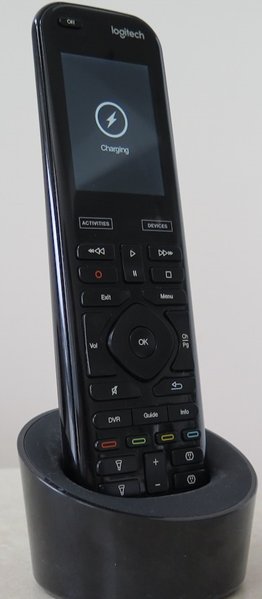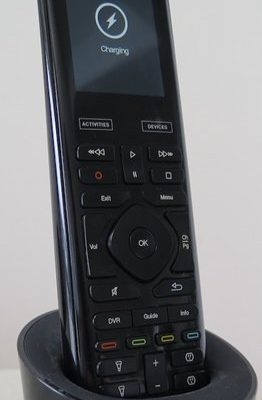
Connecting a Logitech Harmony (or one of their other universal remotes) should make controlling your whole entertainment setup a breeze: one remote, fewer headaches, and your coffee table finally looks less like a remote-control graveyard. But when the official remote code doesn’t work? Yep, frustration city. You start doubting if you grabbed the right product, or if you’re “doing it wrong.” Been there. Let’s slow down, take a breath, and walk step-by-step through what’s really going on—and more importantly, what you can do about it.
Why Your Logitech Universal Remote Code Might Not Work
There’s something almost magical about a universal remote, right? With one little device, you should be able to command your TV, soundbar, Blu-ray player—maybe even your air conditioner if you’re fancy. So, when Logitech remotes refuse to play nice, it’s tempting to blame the remote itself. But here’s the thing: universal remotes work by “talking” to your devices in their own special code. If that code doesn’t match what your device expects, it’s sort of like ordering food in the wrong language at a restaurant.
Codes can fail for a bunch of reasons. Sometimes, device manufacturers update their models or firmware, but the code databases don’t catch up immediately. You might have a device that’s a bit too new (or too old), leaving it stuck in compatibility limbo. Or maybe you’re eyeballing the guide and enter a code with a typo. Even something as simple as a dying battery in the remote can mess with the process.
Plus, there’s the sneaky culprit: many devices sold at big-box stores have slightly different internals than their “standard” versions, so the code that works for one might not for another. It’s a bit like buying shoes—all size 9s aren’t created equal. That’s why Logitech’s giant “code library” isn’t totally perfect. Basically, don’t panic if your code fails. You’re not alone, and there’s plenty you can still try.
Double-Check the Basics: The Easy Stuff First
Alright, let’s not overthink things just yet. Before you get lost in advanced troubleshooting, it’s always smart to check the basics—it’s shocking how often the “fix” is embarrassing simple (trust me, I’ve been humbled here).
- Battery check: Are your remote’s batteries fresh? Weak batteries can send out incomplete signals, making successful pairing a lost cause.
- Point, aim, distance: Try moving closer and aiming the remote directly at the device’s sensor. Obstacles and distance matter more than you’d think.
- Device power: Weirdly, some electronics need to be “on” to pair, while others only respond when in standby mode. Flick it on and off to see if it makes a difference.
- Input mode: Some devices (especially soundbars and AV receivers) need to be in a specific input mode to accept a remote code. Double-check the manual or just cycle through the inputs and try again.
If you can rule out the easy stuff and it’s still not working, then yes—it’s time to break out a few more advanced tricks.
Try Re-Syncing and Using Alternate Codes
Let me explain: Logitech remotes usually come loaded with a few ways to match up with your gadgets. If one code doesn’t work, there are often alternatives—sometimes dozens per brand! On the Harmony series, for example, the setup app or software will recommend the most common codes, but there’s usually a “Didn’t work?” option that lets you try others.
What does “re-sync” even mean? When you re-sync, you’re basically having the remote “forget” what it tried before, and teaching it a fresh code. This is usually quick: just head back into the setup app (or on some models, use the on-remote buttons) and punch in the next recommended code. If you’re unlucky, you’ll go through a handful before you hit paydirt.
It’s like trying keys on a keyring—sometimes you have to try them all before you unlock the door.
Don’t forget: device names aren’t always what you expect. For example, if your TV is actually a re-branded version of another company’s model (hello, private label TVs at Walmart or Costco), you might want to try codes for its “parent” brand. Researching your device’s model number online can help you discover these hidden connections.
Manual Pairing: Teaching the Remote Your Device’s Functions
Here’s a feature I really wish more people knew about: learning mode. It’s not just for techies. If the preset codes aren’t working, some Logitech universal remotes (especially the Harmony range) have a way to “learn” directly from your original remote.
How? You basically place the two remotes facing each other, press a button on the Logitech, then the matching button on your old remote. The universal remote listens and memorizes that specific signal. Yes, it’s a little tedious, but it’s often a surefire way to get stubborn devices working—especially oddballs like older DVD players, or off-brand stuff that isn’t in any codebook.
Not every model supports this, but if yours does, check the manual or online guide for “manual programming” or “learning IR codes.” Remember to label what each button does as you go, so you don’t end up with a random jumble later.
Resetting the Remote: A Fresh Start Might Help
Sometimes, tech gets a little “confused” after too much tweaking. If you’ve tried a bunch of codes and things just seem stuck, a full reset can work wonders. Think of it like shaking an Etch A Sketch: everything’s wiped clean, and you can start over without all the little mistakes from past attempts.
For most Logitech universal remotes, there’s an official reset process—usually involving holding a button while popping in the batteries, or using the setup software to clear all pairings. Resetting won’t break your remote, but you will lose whatever you programmed, so maybe jot down what you tried before! After a reset, re-enter your devices and codes one by one, carefully.
One classic example: I once spent an hour troubleshooting my living room setup, only to discover my Harmony remote had “remembered” a weird configuration from a device I no longer owned. A quick reset fixed everything. Don’t be afraid to give it a clean slate.
Check for Software Updates and Code Database Changes
Here’s the part people forget: your Logitech remote relies on its code database—and if you’ve had your remote awhile, that database might be dusty. Logitech does push out updates for their Harmony software and sometimes even firmware for the remote itself. These updates add new codes, patch bugs, and sometimes even improve pairing for tricky brands.
To update, you’ll usually need to connect your remote to your computer and open up the Logitech Harmony setup app. The app should prompt you about software or firmware updates. Don’t skip these! Even if nothing else has worked, an update can suddenly “magically” let your remote talk to a device that stumped it before. (It’s a little like your remote learning a new language overnight.)
When All Else Fails: Alternatives and Workarounds
Let’s be honest: sometimes, no matter what you do, a device just refuses to play nice with your universal remote. It’s frustrating—but you do have options.
- Stick with the original remote for that one device. You’re not “defeated” if you keep one extra remote—especially if it’s a weird soundbar or a media box from your cable company that changes codes constantly.
- Try a different universal remote brand. Some devices are simply pickier, and occasionally another remote (like One For All or GE) might have a better code match.
- Consider smart home integrations. Higher-end Logitech remotes sometimes allow for Wi-Fi or Bluetooth control if IR pairing doesn’t work. If your devices are “smart” enough, you might be able to control them via an app or voice assistant instead.
Remember, the end goal is less clutter and more convenience—not absolute perfection. If you get 90% of your devices synced up and only have to juggle one extra original remote, that’s still a win in my book.
Universal vs. OEM Remotes: Why It’s Sometimes Tricky
You might be wondering, “Why do I have to deal with this at all?” Here’s a secret: not all remotes are created equal. OEM remotes (the ones that come in the box with your device) are designed to talk smoothly with one specific gadget. Universal remotes try to communicate with thousands of different devices, all with slightly different ways of doing things.
That’s why you run into odd hiccups like certain buttons not working, or a power button that’s a bit finicky. Universal remotes excel at tidying up your coffee table, but they aren’t always perfect at every function. Sometimes there will be a button or feature your Logitech remote just can’t replicate. Even then, the trade-off is usually worth it for the convenience.
It’s sort of like universal charging cables for your phone—sure, they’re 99% great, but occasionally your phone still wants its “special” charger. Embrace the compromise, and focus on what works for your setup.
Bringing It All Together: Getting Back to Simplicity
Dealing with a stubborn Logitech universal remote can feel like you’re trying to solve a mini-mystery in your living room. Maybe you just wanted to watch a movie, not earn a degree in remote control troubleshooting! But honestly, a little patience and a step-by-step approach make all the difference.
Whether you fix things by double-checking the basics, trying alternate codes, “teaching” your remote new tricks, or biting the bullet and resetting everything, there’s usually a solution. And hey—sometimes you need to make peace with using two remotes instead of one. The goal isn’t technical perfection, it’s enjoying your entertainment space without stress.
So, next time your Logitech universal remote code doesn’t work, remember: you’re not alone, and you’ve got plenty of tools in your toolbox. Take it slow, keep your sense of humor, and you’ll be back to binge-watching in no time.
